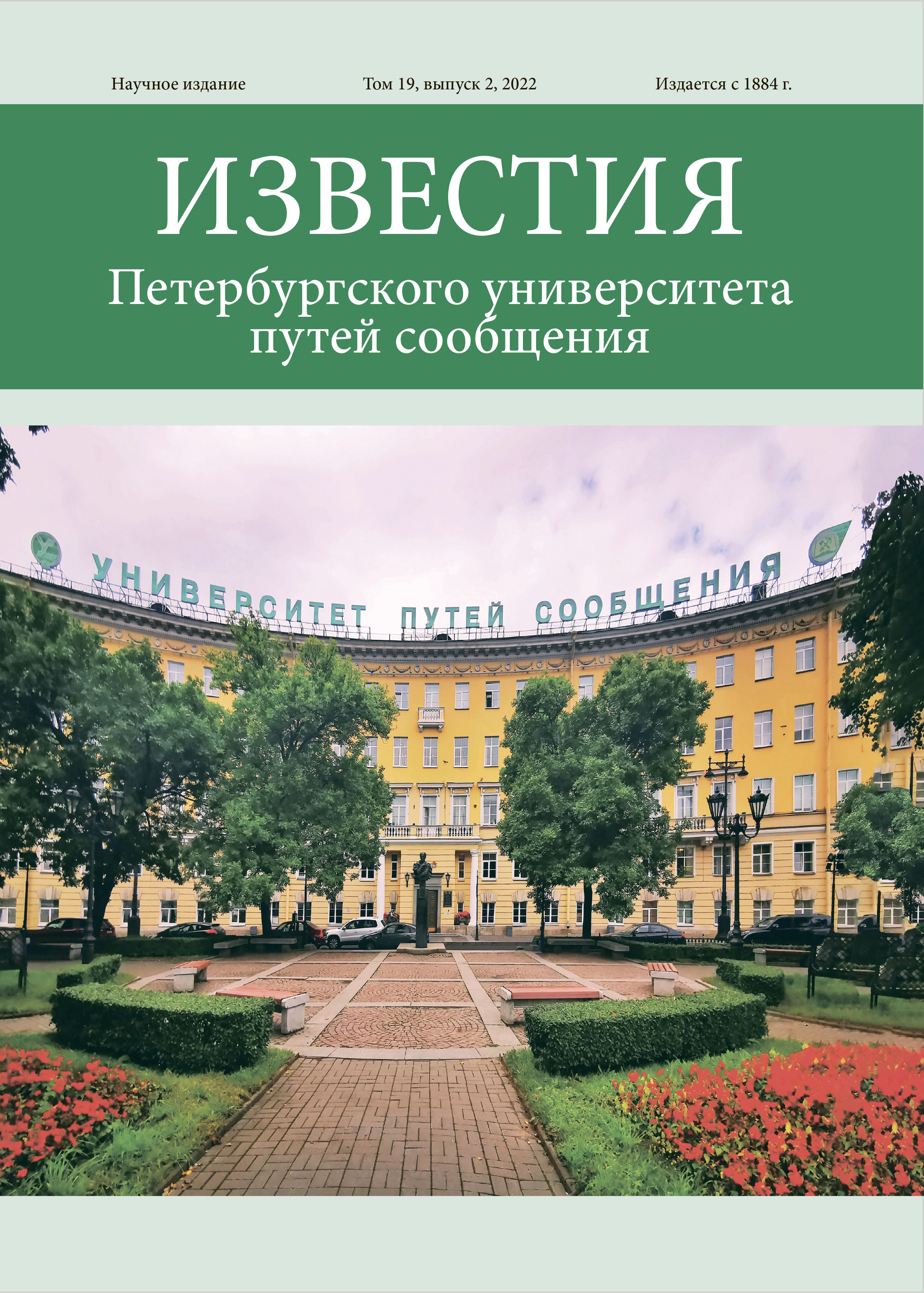Russian Federation
Purpose: To create highly effective heat-insulating structural concrete, recommended for insulating and preventing permafrost soil thawing. Methods: When conducting research, we used GOST (Russia State Standards) 25820-2014 “Lightweight concrete. Specifications”, GOST 25485—2019 “Cellular concrete. General technical conditions”. Determination of strength and processing of results according to GOST 10180-2012 “Concrete. Methods for determining strength upon control samples”; thermal conductivity coefficient was determined according to GOST 7076-99 “Construction materials and products. Method for determining thermal conductivity and thermal resistance at stationary thermal regime”; frost resistance of concrete according to GOST 10060-2012 “Concrete. Methods for determining frost resistance”; density of concrete in natural moisture state- according to GOST 12730.1-2020 “Concrete. Density determination methods”. It has been established experimentally that in order to create highly efficient heat-insulating-structural concrete, it is advisable to use as a filler a foam glass of fraction 1.25–2.5 mm, D250, λ ≈ 0.06 W/ m · °C, and for to create strong and reliable matrix on cement basis it’s effective to use finely dispersed microsilica in combination with complex chemical additive on polycarboxylate basis, modified with nano-dispersions of silicon dioxide, SiO2. Results of physicalmechanical studies have confirmed that it is effective to use particles of silicon dioxide together of micro- and nano-size in combination with surfactants represented by polycarboxylate polymers, meanwhile, foamed glass concrete with the best compressive strength and tensile strength at bending a rises significantly, coefficient of resistance to cracks of nanomodified foam glass concrete, Ktr. = Rbend./Rcompress. = 3.6/13.3 = 0.27, has rather high value which should provide for increased resistance to cracks and for reliability for a protective coating. In order to increase density/strength without deteriorating heat-insulating indicators it is advisable to use additionally a finely-ground blast-furnace slag as a filler which a rises cohesion of foam glass concrete mixture and strength of foam glass concrete. Practical significance: Rational ratio of components of nanomodified foam glass concrete mixture ensures the creation of highly mobile foam glass concrete mixture with good workability, and on the mixture basis, a unique heat-insulating-structural material is formed with the following characteristics: D900; λ = 0.14 W/m·°C, B12, Btb2.9 F1300 that defines it as a thermal insulation material of increased reliability and durability, which is advisable for recommendation for the Arctic harsh regions.
foam glass concrete, foam glass, heat-insulating-structural material, reliability, durability, complex chemical additive, thermal conductivity coefficient, frost resistance, strength
1. Trofimov B.Yu., Kramar L.Yu., Shul'dyakov K.V. Metody ocenki dolgovechnosti betona s vysokimi ekspluatacionnymi harakteristikami Seriya konferenciy IOP: Materialovedenie i inzheneriya, 2020 g., 962 (2), 022010 DOI:https://doi.org/10.1088/1757-899X/962/2/022010
2. Kramar L.Ya., Kydyakov A.I., Shul'dyakov K.V. Vvedenie puccolanovoy dobavki dlya povysheniya morozostoykosti betona dorozhnogo pokrytiya Seriya konferenciy IOP: Materials Science and Engineering, 2018, 451(1), 012009 DOI:https://doi.org/10.1088/1757-899X/451/1/012009
3. Solov'eva V., Stepanova I., Solov'ev D., Kasatkina A. Vysokoeffektivnaya remontnaya smes' dlya vosstanovleniya i zaschity povrezhdennyh betonnyh konstrukciy Konspekt lekciy po grazhdanskomu stroitel'stvu ssylka otklyuchena, 2020, 50, str. . 369-375 DOI:https://doi.org/10.1007/978-981-15-0454-9_38
4. Solov'eva V., Stepanova I., Solov'ev D. Vysokoprochnyy beton s uluchshennymi deformacionnymi harakteristikami dlya dorozhnyh pokrytiy. Set' konferenciy E3S, Transportnaya inzheneriya grunta v holodnyh regionah, Konspekty lekciy po grazhdanskomu stroitel'stvu, tom 50, tom 2, 2020 g., str. 339-345. https://doi:https://doi.org/10.1007/978-981-15-0454-9_35.
5. Solov'eva V., Stepanova I., Solov'ev D., Ershikov N. Povyshenie urovnya svoystv kompozicionnyh materialov dlya inzhenernyh geokonstrukciy s primeneniem dobavok novogo pokoleniya Konspekt lekciy v grazhdanskom stroitel'stveeta ssylka invalid, 2020, 50, s. 387-393 DOIhttps://doi.org/10.1007/978-981-15-0454-9_40
6. Solov'eva V., Solov'ev D., Stepanova I. Betony s unikal'nymi svoystvami dlya special'nyh stroitel'nyh konstrukciy Materialovedcheskiy forum, ssylka otklyuchena, 2018, 945 MSF, s. 64-69 https://doi.org/10.4028/www.scientific.net/MSF.945.64
7. Nikolaev S.V., Benin A.V., Popov A.M. Metodika vybora effektivnogo pogruzheniya i kontrolya glubiny zapolneniya stroitel'nyh materialov s otkrytoy teksturoy Journal of Physics: Conference Seriesthis link is disabled, 2021, 2131(2), 022055 DOIhttps://doi.org/10.1088/1742-6596/2131/2 /022055
8. Karaulov A.V., Nemcev D.V., Kon'kov A.V., Shehov V.V. Issledovanie zadach teorii ustoychivosti gruntov simpleks-metodom Journal of Physics: Seriya konferenciyssylka otklyuchena, 2021, 2131(3), 032019 DOI:https://doi.org/10.1088/1742-6596/2131/3/002019
9. Belash T.A., Mitrofanova M.N. Svaynye fundamenty dlya rayonov sovmestnogo proyavleniya vechnoy merzloty i povyshennoy seysmichnosti (2018) Seriya konferenciy IOP: Materialovedenie i inzheneriya, 463 (2), № 022076 DOI:https://doi.org/10.1088/1757-899X/463/2/022076
10. Svatovskaya L., Mihaylova K., Kabanov A., Hamenok N. Osobennosti processov rastvoreniya v tehnologiyah geostroitel'stva Konspekt lekciy po grazhdanskomu stroitel'stvu ssylka otklyuchena, 2020, 50, s. 421-429 DOI:https://doi.org/10.1007/978-981-15-0454-9_44
11. Svatovskaya L., Urov O., Mihaylova K., Supelyuk T. Informacionnaya ocenka sohraneniya prirodnyh geosistem v geostroitel'stve putem povysheniya kachestva betona Konspekt lekciy po stroitel'stvu ssylka otklyuchena, 2020, 50, s. str. 405-411 DOI:https://doi.org/10.1007/978-981-15-0454-9_42
12. Sycheva A., Kamenev Yu., Svatovskaya L., Avseenko A. Sposob proizvodstva neavtoklavnogo penobetona na osnove polimerov dlya stroitel'stva razlichnyh dorozhnyh sooruzheniy v holodnyh regionah Konspekt lekciy po stroitel'stvu. ssylka otklyuchena, 2020, 50, s. 469-477 DOI:https://doi.org/10.1007/978-981-15-0454-9_49
13. Glazunov V.V., Gorodnova E.V., Efimova N.N., Kulikov A.I., Kulikova N.V. Geofizicheskiy monitoring izmeneniy sostoyaniya osnovaniya nasypi avtomobil'noy dorogi putem stabilizacii grunta s ispol'zovaniem energii vzryva Inzhenerno-gornaya geofizika 2018 - 14 s. Konferenciya i vystavka, . DOI:https://doi.org/10.1088/1755-1315/459/3/032028
14. Kolesnikova G.N., Gavrilov T.A. Modelirovanie usloviy obrazovaniya nizkotemperaturnyh treschin v asfal'tobetonnom sloe avtomobil'noy dorogi (2018) Vestnik Tomskogo gosudarstvennogo universiteta, Matematika i mehanika, 2018 (56), s. 57-66. DOI:https://doi.org/10.17223/19988621/56/5
15. Nesterov A.A., Marchenko A.V., Vasil'ev N.K., Kondrashov Yu.G., Alhimenko A.I. Temperaturnye deformacii grunta, vliyayuschie na transportnuyu nepreryvnost' Arktiki. Transportnaya inzheneriya gruntov v holodnyh regionah, tom 1 (str. 25-34) DOI:https://doi.org/10.1007/978-981-15-0450-1_4.









